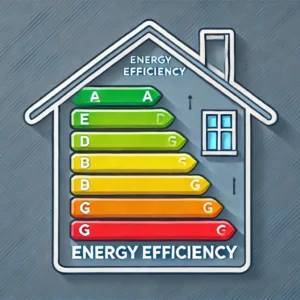A lien on your property represents a legal claim against your asset as security for a debt or obligation. If you’ve discovered a lien on your property, it’s important to understand what it means, how it can affect your financial standing, and what steps you can take to address it.
What Is a Lien?
A lien is a legal right or interest that a creditor holds in your property until you satisfy the underlying debt. Essentially, it acts as collateral. Common types of liens include:
• Mortgage Liens: Placed by a lender when you take out a mortgage, giving them a claim on your property if you default on payments.
• Mechanic’s Liens: Filed by contractors or suppliers who have not been paid for work performed or materials provided for property improvements.
• Tax Liens: Imposed by the government when property taxes or other taxes are overdue.
• Judgment Liens: Result from court judgments when a debtor fails to pay money owed after a lawsuit.
How Does a Lien Affect Your Property?
When a lien is recorded against your property, it can have several implications:
• Clouded Title: Liens can complicate the transfer or sale of your property. Buyers and lenders typically require a clear title, free of any encumbrances.
• Credit Impact: A lien can negatively affect your credit score and make it more difficult to secure future loans or favorable interest rates.
• Forced Sale: In some cases, if the debt remains unpaid, the lienholder might force the sale of your property to recoup the owed amount.
Reasons Liens Are Placed
Liens can be placed for various reasons, including:
• Unpaid Debts: Failure to repay a loan, credit card debt, or other financial obligations.
• Unsettled Contractor Bills: Contractors may file a mechanic’s lien if payment for work or materials isn’t received.
• Tax Delinquency: Falling behind on property or income taxes can lead to a tax lien from the government.
• Legal Judgments: Courts may issue judgment liens after a legal decision against you in a civil lawsuit.
What to Do If There’s a Lien on Your Property
1. Verify the Lien Details
- Review Public Records: Confirm the lien’s authenticity and details through county records or a title search.
- Understand the Debt: Identify which creditor has placed the lien and the amount owed, as well as the nature of the underlying debt.
2. Communicate with the Lienholder
- Discuss Resolution Options: Contact the creditor to understand how the debt can be satisfied. Negotiating a payment plan or settlement might be possible.
- Request a Lien Release: Once the debt is fully paid, obtain a lien release document from the creditor as proof that the claim has been removed.
3. Consult Legal or Financial Advisors
- Legal Guidance: An attorney experienced in real estate or debt issues can help navigate the legal process, especially if the lien is disputed.
- Financial Counseling: A financial advisor can help you assess how to manage and pay off the debt without jeopardizing your financial stability.
How to Remove a Lien from Your Property
A. Satisfy the Debt
Pay off the outstanding balance associated with the lien. Once cleared, the lienholder should provide a lien release, which must be filed with the appropriate government office to officially remove the claim from your property title.
B. Negotiate a Settlement
In some cases, creditors may be willing to accept a lower amount than originally owed. A negotiated settlement can lead to a lien release once agreed terms are met.
C. Challenge the Lien
If you believe the lien was filed in error or is invalid, you can contest it. This typically involves legal proceedings where you’ll need to present evidence to support your case.
Preventing Future Liens
• Stay Current on Payments: Ensure all bills—mortgage, taxes, and contractor invoices—are paid on time to avoid liens.
• Keep Records: Maintain organized documentation for all financial transactions and property-related expenses.
• Conduct Title Searches: Before any property transaction, perform a title search to ensure there are no undisclosed liens or encumbrances.
Final Thoughts
A lien on your property is a serious matter that can affect your ability to sell or refinance your asset. By understanding what a lien entails, verifying its legitimacy, and taking the appropriate steps—whether through paying off the debt, negotiating a settlement, or legally challenging an incorrect lien—you can work toward clearing your title and protecting your financial future.






